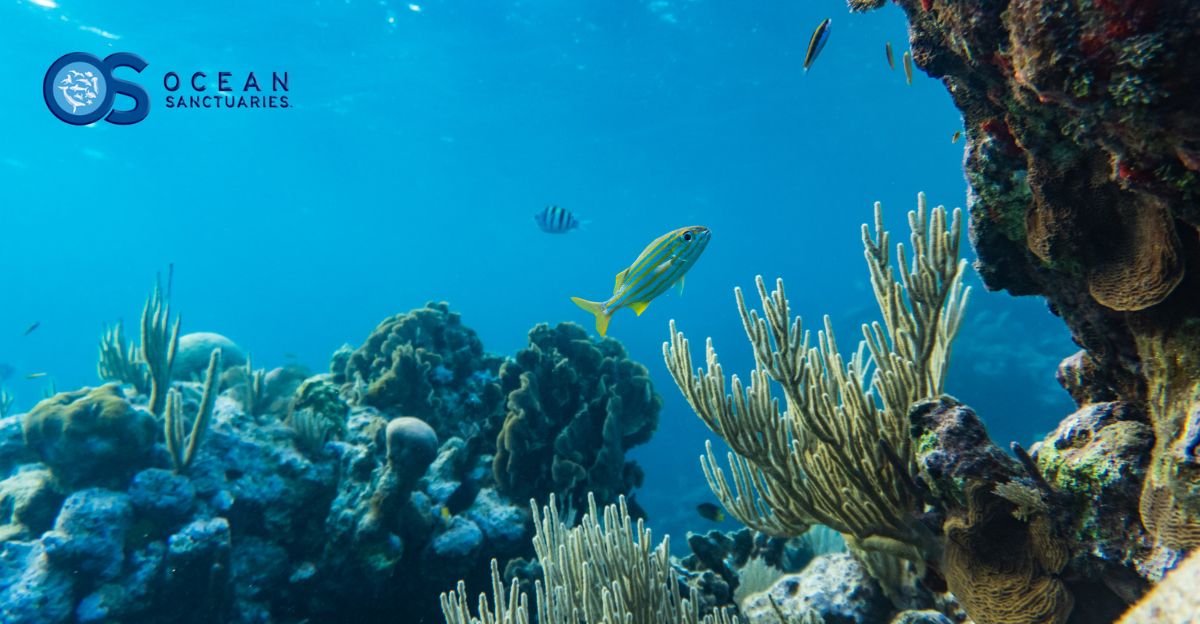Data From the Deep: How Everyday People Are Powering Artificial Reef Research
Citizen Scientists Dive In to Monitor Marine Life on Artificial Reefs Like Never Before
San Diego, CA – April 4, 2025– In an era where ocean health is under increasing threat from climate change, pollution, and habitat destruction, every data point counts. Yet some of the most vital contributions to marine conservation are not coming from deep-pocketed institutions or government labs—they’re coming from everyday people. Thanks to a growing citizen science movement, volunteers are diving deep to collect critical data on artificial reefs, helping researchers better understand and protect these vital underwater ecosystems.
Ocean Sanctuaries, a nonprofit committed to empowering citizen scientists, is leading one of the largest community-driven artificial reef monitoring programs in North America. Through structured surveys, underwater photography, and real-time reporting via apps like iNaturalist, everyday divers are now playing a central role in documenting the marine life that thrives on these man-made structures.
"Artificial reefs offer a second chance for marine biodiversity—and it’s citizen scientists who are helping us write that comeback story," said a spokesperson for Ocean Sanctuaries. "With their eyes, cameras, and curiosity, we’re collecting long-term data that’s changing the way we study the ocean."
Artificial Reefs: A Second Life for Ships, A New Home for Marine Life
Artificial reefs are submerged structures—often decommissioned ships or purpose-built modules—designed to mimic natural reef habitats. These installations provide shelter, breeding grounds, and feeding areas for a wide range of marine species. One of the most prominent examples is the HMCS Yukon, a 366-foot Canadian naval vessel sunk off the coast of San Diego in 2000.
Over the past two decades, the Yukon has transformed from bare metal to a thriving underwater metropolis, attracting species such as:
Rockfish, Garibaldi, and Lingcod
Nudibranchs and soft corals
Sea bass and Sevengill sharks
Despite their importance, artificial reefs have often lacked continuous, structured biological monitoring. That’s where citizen science is making waves.
The Citizen Science Model: Dive, Document, Discover
Ocean Sanctuaries has created a replicable citizen science model for monitoring artificial reefs that is both scientifically rigorous and accessible to non-professionals.
Key elements include:
Training divers in species identification and standardized data collection methods
Using photography and video to document biodiversity on artificial reef structures
Uploading observations to open-access platforms like iNaturalist, where they become part of global biodiversity datasets
Comparing seasonal changes and tracking long-term ecological trends
Citizen scientists contribute by:
Conducting regular dive surveys at reef sites like the Yukon
Recording species presence, abundance, and behavior
Tagging anomalies such as invasive species or evidence of coral bleaching
"Every dive is a data dive," said a program coordinator at Ocean Sanctuaries. "Even casual observations, when standardized, give us a powerful lens into how these ecosystems evolve over time."
Real Impacts: From Local Knowledge to Global Conservation
The information collected by citizen divers is already having measurable impacts:
Supporting Marine Protected Area (MPA) proposals by showing artificial reefs' role in biodiversity
Informing fishery and tourism management, especially as some reefs double as recreational dive sites
Identifying changes in marine populations, such as increasing nudibranch diversity or the reappearance of long-absent species
Documenting habitat use by apex predators, such as seasonal Sevengill shark sightings
This localized data is also feeding into larger international databases, allowing researchers to cross-reference findings and validate patterns across regions.
"Science can no longer afford to operate in silos," said a marine biologist affiliated with the project. "The more inclusive we are, the more complete our understanding of the ocean becomes."
A Growing Network of Reef Researchers
In 2024 alone, Ocean Sanctuaries recruited and trained over 400 volunteer divers, logging more than 1,200 dives across artificial reef systems in Southern California and Baja California.
Current areas of focus include:
Longitudinal reef health tracking on the HMCS Yukon
Microhabitat mapping for invertebrates and cryptic species
Seasonal population shifts in pelagic species and reef fish
Behavioral studies of predators and schooling fish
Looking ahead, Ocean Sanctuaries plans to expand the initiative to include:
ROV-assisted surveys for deeper reefs
Acoustic monitoring to assess reef soundscapes and fish communication
3D reef mapping using photogrammetry, powered by citizen-collected data
“We are building a layered understanding of these reefs—from who lives there, to when and why they move, to how the reef structure supports or challenges their survival.”
Technology Meets Passion: Tools that Empower Participants
This citizen science revolution wouldn’t be possible without accessible technology. Ocean Sanctuaries has embraced a toolkit that empowers the public to contribute meaningfully:
iNaturalist: Used for uploading and identifying species
Dive slates & ID guides: Waterproof tools for recording observations underwater
Photogrammetry software: To create 3D models of reef structures using diver-submitted photos
GIS mapping tools: For geolocating species observations across dive sites
Participants don’t need to be marine biologists—just willing to learn, explore, and document.
How You Can Get Involved
Ocean Sanctuaries is actively seeking new volunteers—from recreational divers and snorkelers to students and marine enthusiasts. Whether you're an experienced underwater explorer or just beginning your journey into ocean conservation, you can contribute.
About Ocean Sanctuaries
Ocean Sanctuaries is a nonprofit organization founded to support citizen-led marine science and conservation. Its mission is to make ocean research accessible, participatory, and impactful. By providing training, technology, and opportunities for involvement, Ocean Sanctuaries empowers individuals and communities to take part in protecting and understanding the marine world.
Media Contact:
Ocean Sanctuaries
Barbara Lloyd
Phone: +1.858.633.7305
Email: [email protected]
Website: www.oceansanctuaries.org
